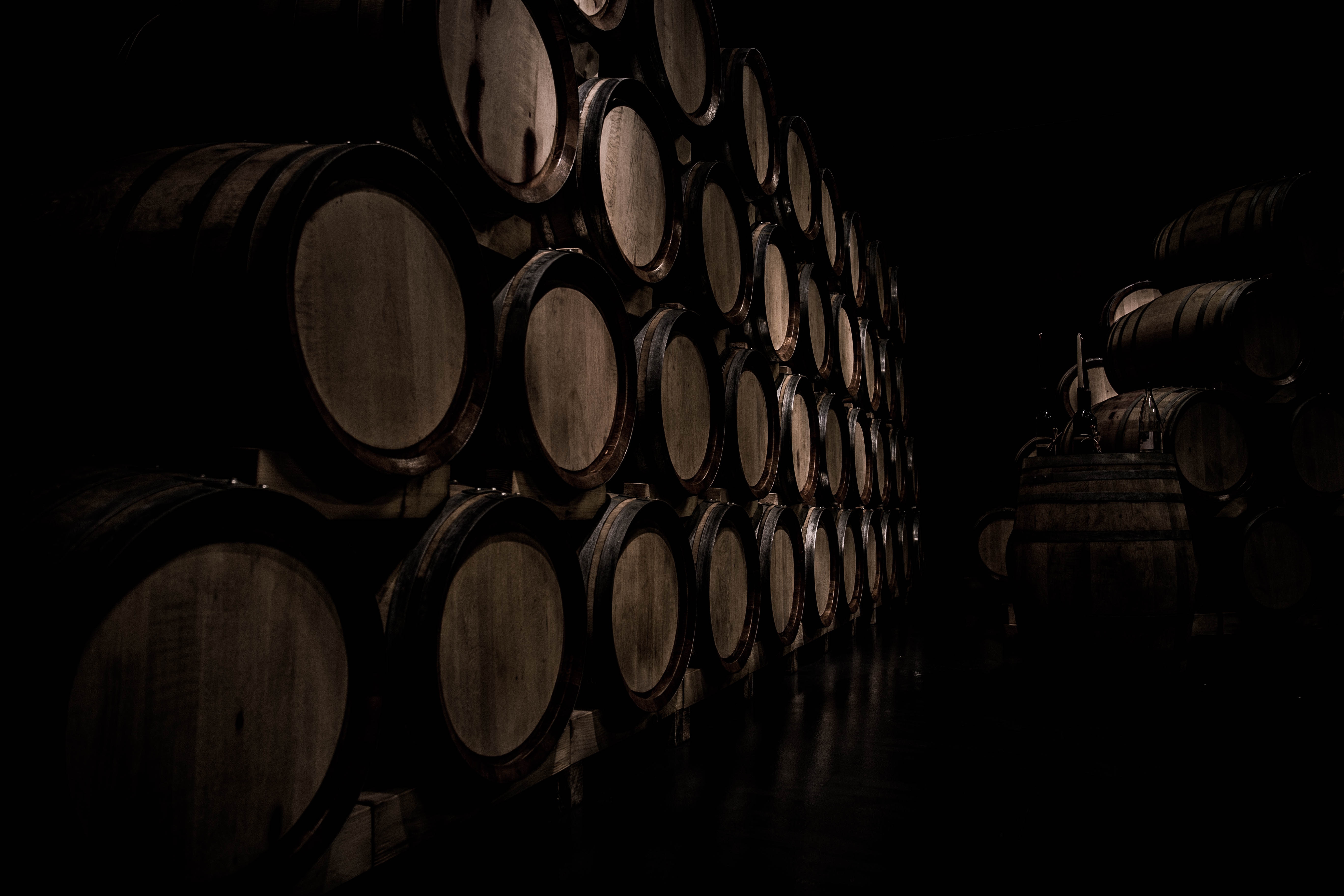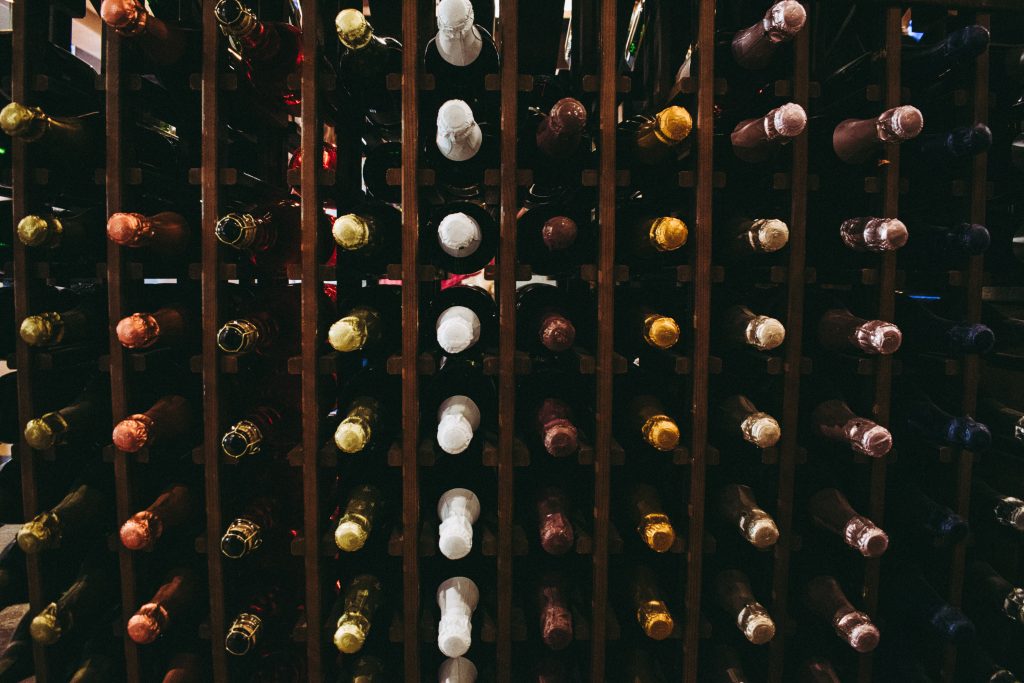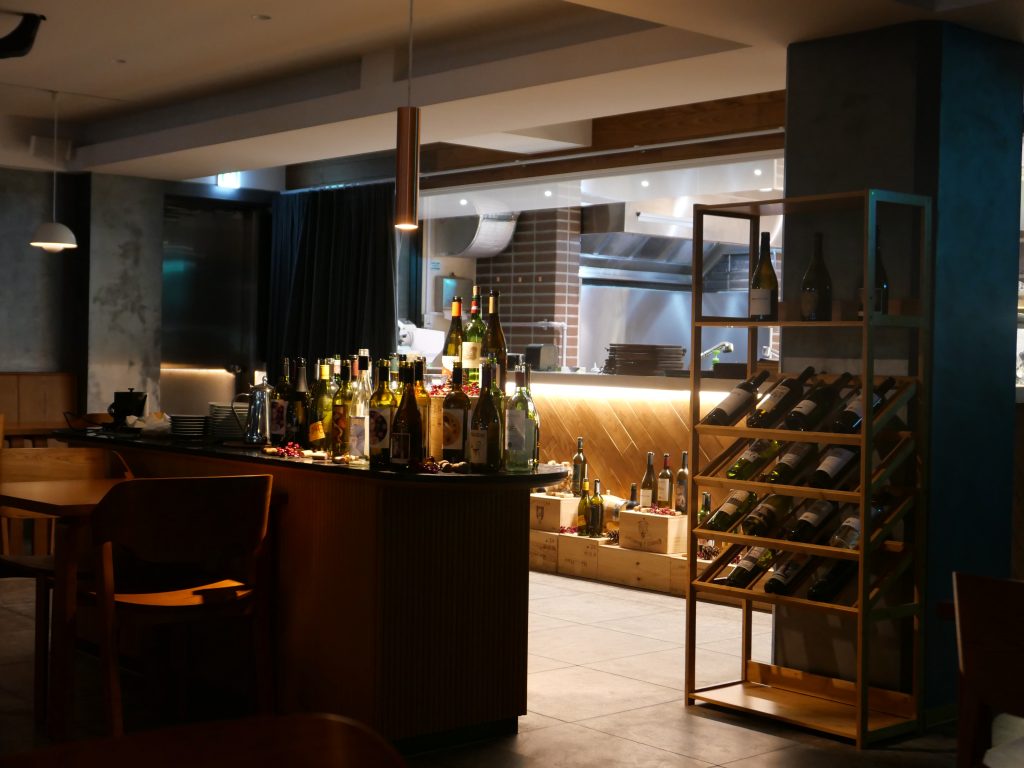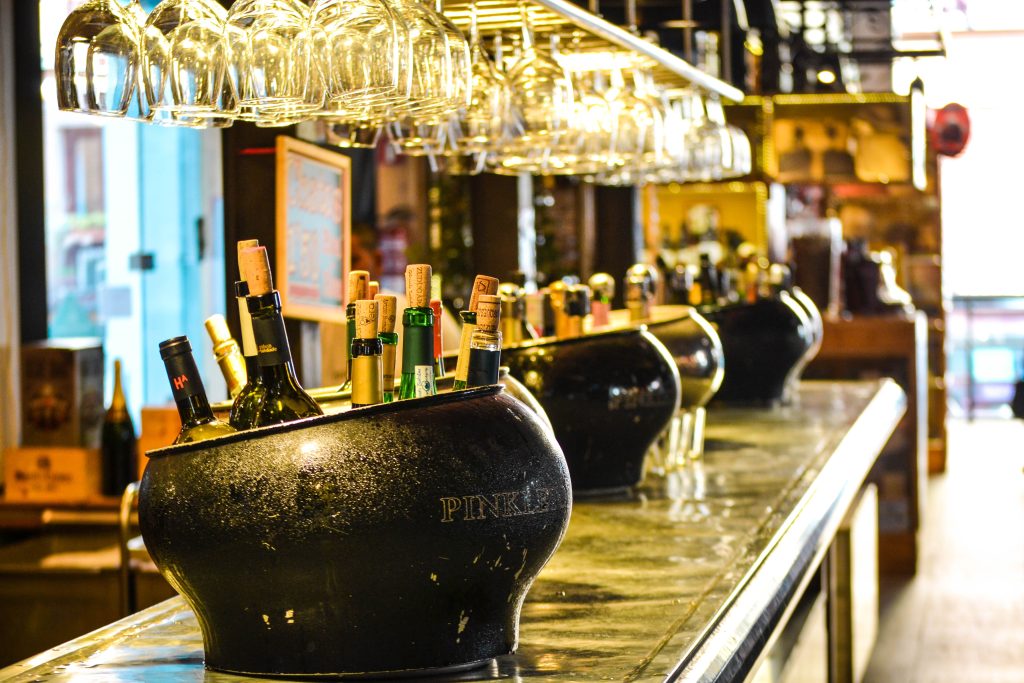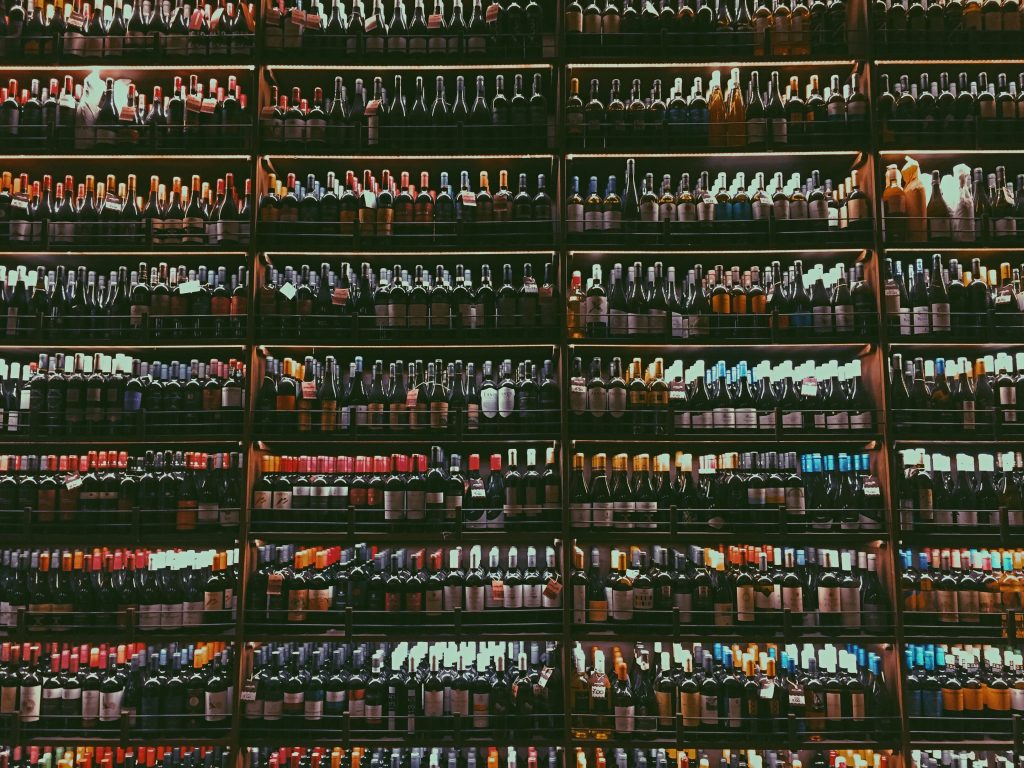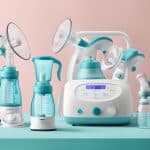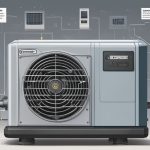The Ultimate Guide to Investing in a Wine Chiller: What You Need to Know
Wine, a timeless elixir celebrated for centuries, deserves the utmost care in preservation. For wine enthusiasts, investing in a wine chiller is more than a luxury; it’s a commitment to savoring every sip at its peak. In this ultimate guide, we’ll explore everything you need to know about investing in a wine chiller to safeguard your wine collection and elevate your wine experience.
Introduction to Wine Chillers: Elevating Your Wine Experience
Wine is more than just a beverage; it’s an art form. From the lush vineyards where grapes ripen under the sun to the careful crafting and aging process, every bottle of wine tells a story. To fully appreciate this story, connoisseurs and enthusiasts know the importance of serving wine at the perfect temperature. This is where wine chillers come into play.
Wine chillers, often called wine coolers or refrigerators, are specialized appliances designed to store and chill wine at the ideal serving temperature. They have evolved from being a luxury item to a common tool in the arsenal of wine lovers and for a good reason. The right serving temperature can enhance your wine’s aroma, flavor, and enjoyment.
In this exploration of wine chillers, we will delve into their various types, features, and benefits. Whether you’re a seasoned sommelier or someone looking to savor the nuances of wine for the first time, understanding the role of wine chillers in preserving and enhancing your wine experience is essential. So, let’s embark on a journey to discover how these remarkable appliances can elevate your appreciation of the nectar of the gods, one bottle at a time.
This comprehensive guide will dive deep into each section to provide the knowledge and insights needed to make an informed decision when investing in a wine chiller. Whether you’re a seasoned sommelier or just beginning to explore the world of wine, this guide will help you protect your wine investment and enjoy the full spectrum of flavors and aromas that wine offers.
The Importance of Wine Preservation
With its complex flavors and delicate nuances, wine is a product of time, nature, and craftsmanship. Preserving these qualities is crucial for any wine lover. This section delves into why wine preservation matters and wine chillers play a pivotal role in this process.
Why Wine Chillers Matter
Wine chillers, also known as wine coolers or refrigerators, are designed to maintain the perfect environment for storing and aging wine. Here’s why they matter:
1. Temperature Control: Wine is highly sensitive to temperature fluctuations. The ideal storage temperature varies depending on the type of wine—red, white, sparkling, or fortified. Wine chillers allow you to set and maintain precise temperatures, ensuring your wine is neither too warm nor too cold.
2. Preservation of Flavor: Wine contains a complex compound mix contributing to its taste and aroma. Fluctuations in temperature can cause these compounds to break down, resulting in off-flavors and aromas. Wine chillers help preserve the wine’s flavor integrity.
3. Preventing Premature Aging: Wine ages best when stored at a consistent temperature and humidity level. Wine chillers create these ideal conditions, preventing premature aging and allowing you to enjoy your wine at its peak.
4. Protection from Light: Many wine chillers have UV-resistant glass doors that shield your wine from harmful UV rays. Exposure to light can cause wine to develop unpleasant aromas and flavors.
5. Reducing Vibration: Some wine chillers incorporate vibration reduction systems. Excessive vibration can disturb the sediment in wine bottles, affecting the aging process. By minimizing vibration, wine chillers ensure your wine remains undisturbed.
6. Humidity Control: Proper humidity levels (around 70%) are critical for storing wine with corks. Wine chillers with humidity control prevent corks from drying out, maintaining an airtight seal.
7. Accessibility: Wine chillers provide easy access to your collection. You don’t have to dig through dusty cellars or move bottles around to find the perfect wine for any occasion.
What Happens When Wine Isn’t Stored Properly
When wine isn’t stored correctly, its quality and value can deteriorate rapidly. Here are some consequences of improper wine storage:
1. Flavor Alteration: Fluctuations in temperature cause the wine to expand and contract, potentially pushing the cork out slightly. This can introduce air into the bottle, leading to oxidation and altered flavors.
2. Cork Deterioration: If stored upright for extended periods, the cork can dry out, shrink, and allow air to seep into the bottle. This results in wine spoilage and “corked” flavors.
3. Heat Damage: Exposure to high temperatures, whether from room temperature or direct sunlight, can cause the wine to “cook.” This results in flat, overly mature flavors and a loss of freshness.
4. Light Damage: Ultraviolet (UV) light can cause “light-struck” flavors in wine, commonly referred to as “skunky” aromas. This effect is especially pronounced in clear or green bottles.
5. Sediment Disturbance: Vibration and movement can disturb the sediment in wine bottles, affecting the aging process and resulting in cloudy wine.
6. Loss of Investment: For collectors who invest in fine wines, improper storage can significantly lose the wine’s value and desirability.
In summary, wine is a delicate living entity that deserves proper care. Wine chillers are your allies in preserving the essence and character of your wine collection, ensuring that every bottle you open delivers an exceptional experience. They offer the peace of mind that your investment is safeguarded and that the nuances of your favorite wines remain intact.
Choosing the Right Wine Chiller
Selecting the right wine chiller is a pivotal decision for wine enthusiasts. Your choice should align with your storage needs, available space, and budget. In this section, we’ll explore the types of wine chillers available, the factors to consider before purchasing and highlight some top wine chiller brands known for their quality.
Types of Wine Chillers
Wine chillers come in various types, each catering to specific storage requirements and space constraints. Understanding the options available is the first step in making an informed decision.
**1. Single-Zone Wine Chillers:
- Ideal for: Those who primarily store one type of wine (e.g., all red or all white).
- Features: Single-zone wine chillers have one temperature control setting, making them suitable for consistently storing one wine type.
**2. Dual-Zone Wine Chillers:
- Ideal for: Wine enthusiasts with diverse collections, as they allow storage at two different temperatures.
- Features: Dual-zone wine chillers have two separate compartments, each with its temperature control. This versatility accommodates both red and white wines.
**3. Built-In Wine Chillers:
- Ideal for: Those with dedicated wine cellars, kitchens, or bar areas.
- Features: Built-in wine chillers are designed to fit seamlessly into cabinetry or under countertops. They offer a sleek, integrated look.
**4. Freestanding Wine Chillers:
- Ideal for: Individuals with more flexibility in terms of placement.
- Features: Freestanding wine chillers are stand-alone units that can be placed anywhere with proper ventilation. They come in various sizes and designs.
**5. Countertop Wine Chillers:
- Ideal for: Those with limited space or small wine collections.
- Features: Countertop wine chillers are compact and designed to sit on kitchen counters or tabletops. They offer convenient access to a few bottles.
**6. Undercounter Wine Chillers:
- Ideal for: Individuals looking for a built-in appearance without extensive installation.
- Features: Undercounter wine chillers can be installed beneath kitchen counters or islands. They provide a streamlined look and are often dual-zone.
Factors to Consider Before Buying
When investing in a wine chiller, take these crucial factors into account to find the perfect match for your wine storage needs:
**1. Capacity: Determine how many bottles you plan to store regularly. Wine chillers come in various capacities, from small units that hold a dozen bottles to large models capable of accommodating hundreds.
**2. Type of Wine: Consider the wine you typically enjoy and store. If you have a mix of reds, whites, and sparkling wines, a dual-zone chiller might be necessary to store them all at their ideal serving temperatures.
**3. Space and Location: Measure the available space where you intend to place the wine chiller. Ensure proper ventilation and access to power outlets in the chosen location.
**4. Temperature Zones: If you enjoy a variety of wines, opt for a wine chiller with multiple temperature zones. This allows you to store different types of wine at their ideal serving temperatures.
**5. Cooling Mechanism: Decide between thermoelectric and compressor wine chillers. Thermoelectric chillers are quieter and have less vibration, making them suitable for long-term storage and display. Compressor chillers offer more precise temperature control and are better for short-term storage and serving.
**6. Temperature Range: Check the temperature range of the wine chiller to ensure it aligns with your wine storage needs. Most wine chillers offer a range between 45°F (7°C) and 65°F (18°C), but some may have narrower ranges.
**7. Humidity Control: Consider a chiller with humidity control features for long-term storage, especially for fine wines. Proper humidity (around 70%) prevents corks from drying and wine from oxidizing.
**8. Shelving and Racks: Examine the shelving and rack design of the wine chiller. Adjustable shelves are versatile and allow you to accommodate different bottle sizes. Wood or metal racks are often preferred for their durability and aesthetic appeal.
**9. Energy Efficiency: Look for an Energy Star-rated wine chiller to ensure it operates efficiently, helping you save on energy costs over time.
**10. UV Protection: Wine is sensitive to light, so consider a chiller with UV-resistant glass doors or solid doors that block out harmful UV rays.
**11. Noise Level: If your wine chiller will be placed in a quiet living space, like a kitchen or dining room, opt for a unit with quiet operation to avoid disruptions.
**12. Brand and Warranty: Research reputable brands that are known for their quality and reliability. Check the warranty offered by the manufacturer to protect your investment.
**13. Price and Budget: Determine your budget and be prepared to balance your desired features with cost considerations. High-end wine chillers may offer advanced features but can be pricier.
**14. Reviews and Recommendations: Read reviews from other customers and seek recommendations from wine enthusiasts to gain insights into the performance and reliability of specific wine chiller models.
Top Wine Chiller Brands
Reputable brands known for producing high-quality wine chillers include:
- NewAir: NewAir offers a range of wine chillers, from compact countertop units to large built-in models. They are known for their reliability and user-friendly features.
- Kalamera: Kalamera produces wine chillers with modern designs and dual-zone cooling options. Their chillers are favored for their durability and stylish appearance.
- Danby: Danby offers a variety of wine chillers, including freestanding and built-in models. They are known for their precise temperature control and longevity.
- EdgeStar: EdgeStar specializes in built-in wine chillers with dual-zone cooling and a focus on energy efficiency. They are ideal for those seeking a seamless, integrated look.
- Whynter: Whynter’s wine chillers are known for their thermoelectric cooling technology, which is quiet and vibration-free. They are suitable for both short-term and long-term storage.
- Avanti: Avanti produces compact countertops and freestanding wine chillers known for their affordability and reliable performance.
- Allavino: Allavino offers wine refrigerators with various capacities and features, including precise temperature control and durable construction.
- Cuisinart: Cuisinart’s wine chillers are praised for their compact size and affordability, making them suitable for smaller collections.
- NutriChef: NutriChef produces budget-friendly wine chillers with thermoelectric cooling and digital touch button displays.
- Wine Enthusiast: Wine Enthusiast is a well-known brand in the wine accessory industry, and their wine refrigerators are appreciated for their quiet operation and sleek design.
Selecting the right wine chiller involves balancing your storage needs, available space, budget, and desired features. These factors will help you find a wine chiller that enhances your wine storage and serving experience.
The Mechanism of Wine Chillers: Precision Cooling for Perfect Sips
Wine chillers are not your typical refrigeration units. They are meticulously engineered appliances designed to cater to the unique temperature needs of wine. Understanding the mechanism behind these devices sheds light on why they are indispensable for wine enthusiasts.
1. Temperature Zones:
Wine chillers typically feature multiple temperature zones. These zones allow you to store various types of wine, such as red, white, and sparkling, at their ideal serving temperatures. The ability to set and maintain precise temperatures is a hallmark of wine chillers.
2. Compressor System:
Many wine chillers use a compressor system, similar to traditional refrigerators. This system circulates a refrigerant through coils, creating a cooling effect. It’s highly efficient and capable of maintaining consistent temperatures.
3. Thermoelectric Cooling:
Some wine chillers employ a thermoelectric cooling mechanism. These units use the Peltier effect to transfer heat from the wine storage area. Thermoelectric chillers are known for their quiet operation and lack of vibration, which can be crucial for wine preservation.
4. Insulation and Sealing:
Proper insulation and sealing are critical in wine chillers to prevent temperature fluctuations caused by external factors. High-quality chillers feature double-paned, UV-resistant glass doors and tight seals to stabilize the interior environment.
5. Humidity Control:
Maintaining the right humidity levels is crucial for wine storage. Some wine chillers have humidity control systems to prevent corks from drying and wine from oxidizing. This feature is especially important for long-term storage.
6. Air Circulation:
Even air circulation is vital to ensure uniform temperatures throughout the chiller. Many wine coolers have internal fans that distribute cool air evenly, preventing hot spots.
7. Vibration Reduction:
Vibrations can disturb the sediment in wine bottles, affecting the aging process. Wine chillers often incorporate vibration reduction systems to keep wine undisturbed and promote proper aging.
8. Digital Controls:
Modern wine chillers feature digital controls that allow you to set and monitor temperatures accurately. Some even offer Wi-Fi connectivity, enabling remote control and monitoring via smartphone apps.
9. LED Lighting:
Soft LED lighting is a common feature in wine chillers. It provides adequate illumination without emitting heat that could affect the wine.
10. Shelves and Racks:
– Wine chillers include specially designed shelves and racks that cradle wine bottles securely and optimize storage space. Some shelves are adjustable to accommodate different bottle sizes.
11. Security Features:
– Some wine chillers offer security features like door locks to protect your valuable wine collection.
The mechanism of wine chillers is a testament to their precision and dedication to wine preservation. Whether you’re a collector storing rare vintages or simply looking to enjoy wine at its best, a wine chiller is a valuable tool, ensuring each sip is a journey into the world of flavors and aromas meticulously preserved at optimal temperatures.
How Wine Chillers Work
Wine chillers are designed to create and maintain the ideal conditions for storing and aging wine. Understanding how these appliances work is essential to appreciate their role in preserving the quality and flavor of your wine collection. This section will explore the fundamental mechanisms behind wine chillers’ operation.
Temperature Control
The most critical aspect of wine storage is temperature control. Wine is highly sensitive to temperature fluctuations, and different types of wine have specific temperature requirements. Wine chillers maintain these temperatures with precision. Here’s how they do it:
1. Thermostat: Wine chillers have a thermostat or digital temperature control panel. You set the desired temperature based on the type of wine you plan to store—red, white, sparkling, or fortified.
2. Cooling System: Wine chillers employ a thermoelectric or compressor-based cooling system. Both systems function to remove heat from the interior of the chiller to maintain the set temperature.
- Thermoelectric Cooling:
- A thermoelectric module is the heart of the cooling process in thermoelectric wine chillers. When an electric current flows through this module, it creates a temperature differential, transferring heat from one side (inside the chiller) to the other (outside).
- This process keeps the interior cool, but it also means that the wine chiller must be placed in a location with adequate ventilation to dissipate the heat generated.
- Compressor Cooling:
- Compressor-based wine chillers use a refrigeration cycle similar to a traditional refrigerator.
- A compressor compresses a refrigerant gas, raising its temperature and pressure. The hot gas then flows through coils on the back or bottom of the chiller, releasing heat into the surrounding environment.
- In a high-pressure, high-temperature state, the refrigerant moves through an expansion valve, causing it to expand and cool rapidly. This chilled refrigerant flows through coils inside the chiller, absorbing heat and maintaining a lower temperature.
- The compressor continues to cycle, maintaining the set temperature inside the chiller.
Additional Features
Beyond temperature control, wine chillers often include features to create optimal storage conditions:
1. Humidity Control: Some wine chillers offer humidity control features to maintain the recommended humidity level, typically around 70%. This prevents corks from drying out and ensures an airtight seal.
2. UV Protection: Wine chillers with glass doors often feature UV-resistant or tempered glass to protect your wine from harmful UV rays. UV exposure can lead to wine degradation and off-flavors.
3. Vibration Reduction: Excessive vibration can disturb the sediment in wine bottles, affecting aging. Some wine chillers are designed with vibration reduction systems to minimize this disturbance.
4. Shelving and Racks: Wine chillers have shelves or racks to hold wine bottles. These are often adjustable to accommodate various bottle sizes and types.
5. Insulation: Wine chillers are well-insulated to maintain a consistent temperature and reduce energy consumption. Proper insulation is vital for energy efficiency and temperature stability.
6. Air Circulation: Wine chillers often have fans to ensure even air distribution, preventing temperature variations inside the unit.
7. Digital Displays: Many modern wine chillers feature digital displays that allow you to monitor and adjust the temperature precisely. Some even offer touchscreen controls.
Understanding how wine chillers work empowers you to maximize your investment. Properly maintained and correctly set, a wine chiller ensures that each bottle you open is at its optimal serving temperature, allowing you to savor the full spectrum of flavors and aromas that wine offers.
Maintenance Essentials for Your Wine Chiller
Maintaining your wine chiller is crucial to ensure it functions effectively and keeps your wine collection in optimal condition. Proper maintenance helps preserve the quality and flavor of your wine. In this section, we’ll cover the essential maintenance tasks for your wine chiller.
- Cleaning and Sanitization
a. Unplug the Chiller: Before cleaning, always unplug your wine chiller from the electrical outlet to ensure safety.
b. Remove Contents: Remove all wine bottles, shelves, and racks from the chiller to access all interior surfaces.
c. Interior Cleaning:
- Wipe down the interior surfaces of the chiller with a damp, non-abrasive cloth or sponge to remove dust, dirt, and any residue.
- Use a mixture of warm water and a mild detergent for stubborn stains or odors. Ensure you rinse thoroughly to remove any soap residue.
d. Shelf and Rack Cleaning:
- Clean the shelves and racks separately in warm, soapy water. Use a non-abrasive cloth or sponge.
- Rinse them thoroughly to remove any soap residue and allow them to dry completely before placing them back in the chiller.
e. Exterior Cleaning:
- Clean the exterior of the chiller with a mild detergent and a soft cloth.
- Please pay attention to the door seal (gasket) and clean it gently with a damp cloth to remove any dirt or residue.
f. Regularity: Perform cleaning as needed, but a general rule is to clean your wine chiller every few months or if you notice significant dust or dirt buildup.
- Temperature and Humidity Management
a. Temperature Settings:
- Regularly check and adjust the temperature settings on your wine chiller to ensure they match the type of wine you’re storing (red, white, sparkling, etc.).
- Be aware that temperatures may fluctuate slightly but remain within the recommended range.
b. Humidity Control:
- If your wine chiller has a humidity control feature, monitor the humidity levels regularly. Aim for a humidity level of around 70% to prevent corks from drying out.
- If your chiller does not have a built-in humidity control system, consider using a small water container or a specialized wine humidifier to maintain proper humidity.
- Door Seal Maintenance
a. Inspection: Regularly inspect the door seal (gasket) for any signs of wear, damage, or gaps.
b. Replacement: If you notice any issues with the seal, such as cracks or gaps, replace it promptly to ensure an airtight seal. A faulty seal can lead to temperature fluctuations and compromised wine storage conditions.
- Routine Inspection
a. Leaks and Condensation:
- Periodically check the chiller for any signs of water leakage or condensation buildup.
- If you notice leaks or excessive condensation, consult the manufacturer’s instructions or contact customer support for guidance.
b. Wine Bottle Inspection:
- Regularly inspect the wine bottles in your chiller for any signs of damage, leakage, or spoilage. Remove any compromised bottles promptly to prevent contamination of the others.
- Regularly Plug and Unplug
a. Unplugging and Cleaning:
- Occasionally unplug the wine chiller, clean it thoroughly, and allow it to air out. This helps prevent odors from building up.
By following these maintenance tasks, you can ensure that your wine chiller remains in good working condition and provides the optimal environment for your wine collection. Proper maintenance will extend the lifespan of your wine chiller and help preserve the quality of your wines.
Maintenance Essentials for Your Wine Chiller
Proper maintenance of your wine chiller is essential to ensure it functions efficiently and continues to provide the ideal storage conditions for your wine collection. Neglecting maintenance can lead to temperature fluctuations, humidity imbalances, and even damage to your wine. Here are the maintenance essentials you need to follow:
- Cleaning and Sanitization
a. Unplug the Chiller: Before starting any cleaning or maintenance tasks, always unplug your wine chiller from the electrical outlet to ensure safety.
b. Empty the Chiller: Remove all wine bottles, shelves, and racks from the chiller to access all interior surfaces.
c. Interior Cleaning:
- Wipe down the interior surfaces of the chiller with a damp, non-abrasive cloth or sponge to remove dust, dirt, and any residue.
- Use a mixture of warm water and a mild detergent for stubborn stains or odors. Ensure you rinse thoroughly to remove any soap residue.
d. Shelf and Rack Cleaning:
- Clean the shelves and racks separately in warm, soapy water. Use a non-abrasive cloth or sponge.
- Rinse them thoroughly to remove any soap residue and allow them to dry completely before placing them back in the chiller.
e. Exterior Cleaning:
- Clean the exterior of the chiller with a mild detergent and a soft cloth.
- Please pay attention to the door seal (gasket) and clean it gently with a damp cloth to remove any dirt or residue.
f. Regularity: Perform cleaning as needed, but a general rule is to clean your wine chiller every few months or if you notice significant dust or dirt buildup.
- Temperature and Humidity Management
a. Temperature Settings:
- Regularly check and adjust the temperature settings on your wine chiller to ensure they match the type of wine you’re storing (red, white, sparkling, etc.).
- Be aware that temperatures may fluctuate slightly but remain within the recommended range.
b. Humidity Control:
- If your wine chiller has a humidity control feature, monitor the humidity levels regularly. Aim for a humidity level of around 70% to prevent corks from drying out.
- If your chiller does not have a built-in humidity control system, consider using a small water container or a specialized wine humidifier to maintain proper humidity.
- Door Seal Maintenance
a. Inspection: Regularly inspect the door seal (gasket) for any signs of wear, damage, or gaps.
b. Replacement: If you notice any issues with the seal, such as cracks or gaps, replace it promptly to ensure an airtight seal. A faulty seal can lead to temperature fluctuations and compromised wine storage conditions.
- Routine Inspection
a. Leaks and Condensation:
- Periodically check the chiller for any signs of water leakage or condensation buildup.
- If you notice leaks or excessive condensation, consult the manufacturer’s instructions or contact customer support for guidance.
b. Wine Bottle Inspection:
- Regularly inspect the wine bottles in your chiller for any signs of damage, leakage, or spoilage. Remove any compromised bottles promptly to prevent contamination of the others.
- Regularly Plug and Unplug
a. Unplugging and Cleaning:
- Occasionally unplug the wine chiller, clean it thoroughly, and allow it to air out. This helps prevent odors from building up.
By following these maintenance tasks, you can ensure that your wine chiller remains in good working condition and provides the optimal environment for your wine collection. Proper maintenance will extend the lifespan of your wine chiller and help preserve the quality of your wines.
FAQs: Your Wine Chiller Queries Answered
Investing in a wine chiller is a significant decision for wine enthusiasts, and it often comes with questions. This section addresses some of the most frequently asked questions about wine chillers to help you better understand these appliances and how to use them effectively.
- What is the ideal temperature for storing wine?
The ideal temperature for storing wine depends on the type of wine:
- Red Wine: Typically, red wines are stored between 55°F (12.8°C) and 65°F (18.3°C). The ideal serving temperature varies depending on the specific red wine.
- White Wine: White wines are usually stored between 45°F (7.2°C) and 55°F (12.8°C). Serving temperatures vary by the type of white wine.
- Sparkling Wine: Sparkling wines, including Champagne, should be stored around 45°F (7.2°C) and served even colder, at 40°F (4.4°C).
- Fortified Wine: Fortified wines like Port are best stored between 55°F (12.8°C) and 65°F (18.3°C).
- Can I use a regular refrigerator to store wine?
While a regular refrigerator can temporarily store wine, it could be better for long-term wine storage. Regular refrigerators are designed for lower temperatures, and the lack of humidity control can lead to wine corks drying out. Additionally, the vibrations from the compressor in a standard refrigerator can disturb wine sediment. A dedicated wine chiller or wine cellar is recommended for long-term wine storage.
- How do I choose the right wine chiller size?
Choosing the right wine chiller size depends on your wine collection and available space. Consider how many bottles you plan to store regularly. Wine chillers come in various capacities, from compact units holding a dozen bottles to larger models capable of accommodating hundreds. Measure the space where you intend to place the chiller to ensure it fits comfortably.
- What’s the difference between a thermoelectric and compressor wine chiller?
- Thermoelectric Wine Chiller: These chillers use a thermoelectric module to transfer heat from the interior to the exterior of the chiller. They are known for being quiet, vibration-free, and energy-efficient. Thermoelectric chillers are suitable for long-term wine storage.
- Compressor Wine Chiller: Compressor-based chillers operate similarly to traditional refrigerators, using a compressor to cool the interior. They offer precise temperature control and are ideal for short-term storage and serving wine. However, they can produce more noise and vibrations.
- How often should I clean my wine chiller?
Regular cleaning is essential to maintain the hygiene and efficiency of your wine chiller. Consider cleaning it every few months or when you notice significant dust or dirt buildup. Additionally, clean up any spills promptly to prevent odors and staining. Always unplug the chiller before cleaning and follow the manufacturer’s cleaning instructions.
- Can I store other beverages in my wine chiller?
While wine chillers are designed for wine storage, some people use them to store other beverages like beer or soft drinks. If you choose to do so, be aware that the temperature settings may not be suitable for these beverages. Additionally, storing non-wine items in your chiller can affect its overall performance and humidity levels, potentially compromising wine storage conditions.
- How do I deal with temperature fluctuations in my wine chiller?
If you notice temperature fluctuations in your wine chiller, check the following:
- Ensure the chiller is placed in a stable environment away from direct sunlight and heat sources.
- Ensure the chiller’s door seal (gasket) is properly sealed.
- Avoid frequently opening the chiller, as this can cause temperature fluctuations.
- If the fluctuations persist, consult the manufacturer’s instructions or contact customer support for guidance.
- Are there any tips for reducing energy consumption with my wine chiller?
To reduce energy consumption with your wine chiller, consider the following:
- Ensure the chiller is located in a well-ventilated area with sufficient clearance.
- Regularly clean the coils on the back or bottom of the chiller to maintain efficient heat dissipation.
- Keep the chiller at a stable temperature, avoiding frequent temperature adjustments.
- Consider investing in an Energy Star-rated wine chiller designed for energy efficiency.
- What do I do if I suspect a problem with my wine chiller?
If you suspect a problem with your wine chiller, consult the manufacturer’s instructions or user manual for troubleshooting. Common issues may include temperature fluctuations, unusual noises, or malfunctions in the control panel. If the issue persists or worsens, contact the manufacturer’s customer support or a qualified appliance technician.
- Can I store opened bottles of wine in my wine chiller?
Yes, you can store opened bottles of wine in your wine chiller to preserve their freshness. Seal the opened bottle with a wine stopper or cork and place it in the chiller. Remember that opened wine bottles may have a shorter shelf life than unopened ones, so try to consume them within a few days to a week for the best quality.
These frequently asked questions provide valuable insights into the proper use and care of wine chillers. By understanding these key aspects, you can maximize the benefits of your wine chiller and enjoy your wine collection to the fullest.
Conclusion: Elevating Your Wine Experience
A wine chiller is more than just an appliance; it’s a guardian of your wine collection, ensuring each bottle reaches its full potential. From maintaining the perfect serving temperature to protecting your investment, a wine chiller elevates your wine experience. Let’s summarize the key takeaways:
Preserving Wine’s Essence
- Temperature Control: Wine chillers provide precise temperature control, preserving your wine’s unique flavors and aromas.
- Humidity Management: Some models offer humidity control to prevent corks from drying out, ensuring an airtight seal.
- UV Protection: UV-resistant glass doors shield your wine from harmful UV rays, preventing light-induced wine degradation.
Tailoring to Your Collection
- Capacity: Choose a wine chiller with the right capacity to accommodate your wine collection, whether a dozen bottles or hundreds.
- Temperature Zones: Dual-zone chillers allow you to store various wine types at their ideal serving temperatures.
- Cooling Mechanism: Decide between thermoelectric and compressor-based chillers based on your storage and noise preferences.
Maintenance for Longevity
- Cleaning: Regularly clean the interior and exterior of your chiller to prevent odors and maintain hygiene.
- Temperature Monitoring: Monitor temperature settings and adjust them to match the wine type.
- Door Seal: Inspect and replace the door seal if damaged to maintain an airtight environment.
- Routine Inspection: Check for leaks, condensation, and the condition of wine bottles to catch issues early.
Energy Efficiency
- Efficient Placement: Properly position your chiller in a well-ventilated area to enhance energy efficiency.
- Coil Cleaning: Keep the coils clean to ensure efficient heat dissipation.
- Energy Star Rating: Consider an Energy Star-rated chiller for optimal energy efficiency.
FAQs: Answering Your Queries
- Temperature: Understand the ideal storage temperatures for different wine types.
- Regular Refrigerator: Learn why a refrigerator isn’t ideal for long-term wine storage.
- Chiller Size: Choose the right size based on your collection and available space.
- Thermoelectric vs. Compressor: Differentiate between the two cooling mechanisms.
- Cleaning: Know when and how to clean your chiller effectively.
- Storing Other Beverages: Understand the implications of storing non-wine items.
- Temperature Fluctuations: Discover how to address temperature fluctuations.
- Energy Consumption: Find tips for reducing energy consumption.
- Troubleshooting: Learn what to do if you encounter issues with your chiller.
- Opened Bottles: Know how to store opened wine bottles in your chiller.
Your wine chiller is a partner on your oenophilic journey, ensuring that every sip of wine is a delightful experience. Whether you’re a casual wine enthusiast or a dedicated collector, the right wine chiller enhances your ability to savor the complexities of each bottle. By following proper maintenance, understanding its features, and using it wisely, you can unlock the full potential of your wine collection and elevate your wine experience to new heights. Cheers to the world of wine, now perfectly chilled and ready to be enjoyed!

